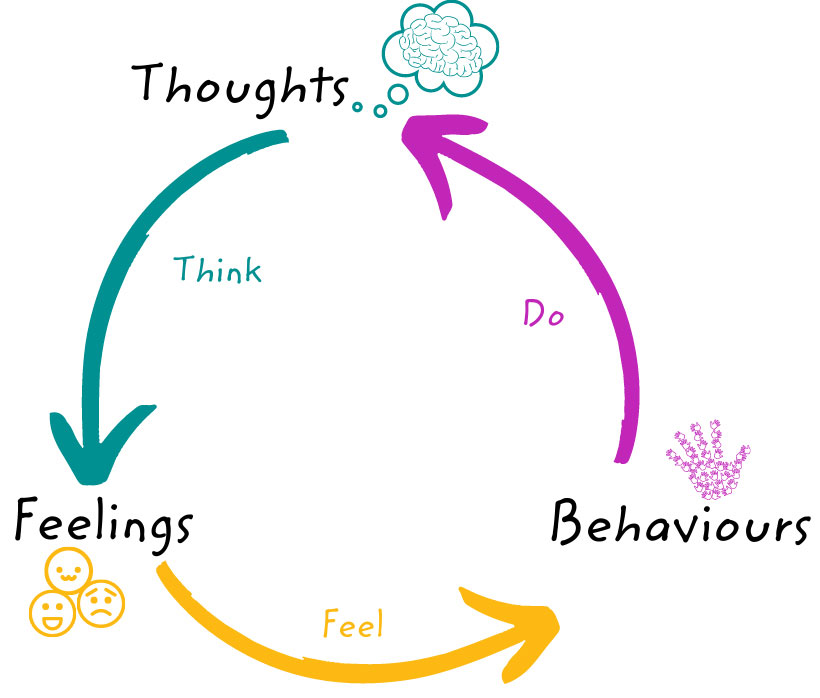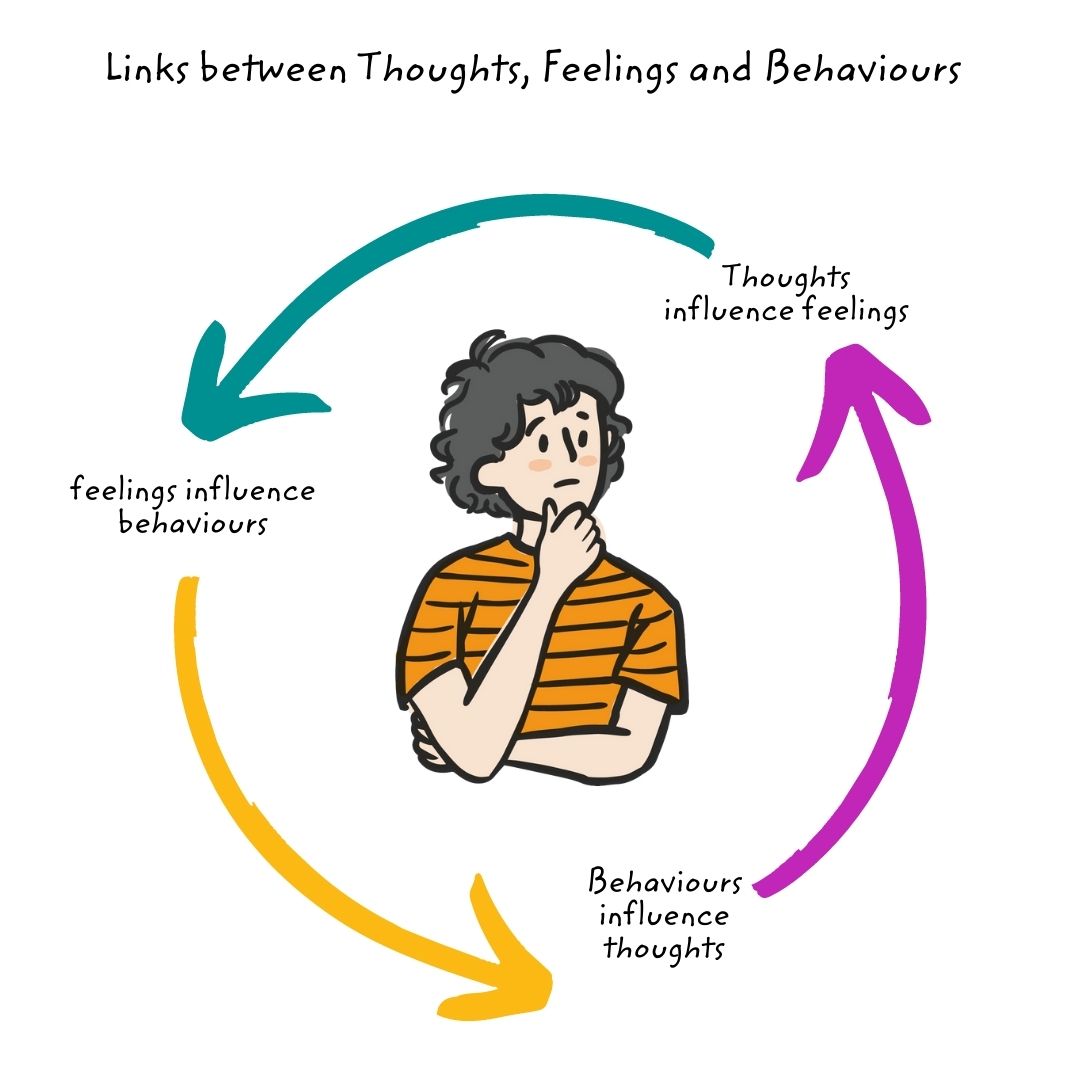Thoughts, feelings and behaviour
As well as recognising and understanding our feelings it is also helpful to understand the links between how we think, feel and behave.
What you think, how you feel and what you do are linked. The way we think about a situation can affect how we feel and what we do. In turn our actions can then affect how we think and feel.



Example - Chris
Example - Ellie


Example - Jack
More about thoughts and thinking affecting our feelings and behaviour
Negative Thinking
When we are experiencing things that may cause stress, anxiety and other tricky feelings thoughts can be particularly pesky!
Nagative Automatic Thoughts (NATS!)
Many negative thoughts happen automatically and can seem to come out of nowhere and are almost always untrue! By taking notice of our thoughts, we can challenge and change them rather than just believing them to be true.


Types of Negative Thoughts
here are some common anxiety-related thought patterns. These can be divided into two broad groups:
- Expecting things to go wrong and, very badly wrong
- Thinking negatively about yourself
For example:
- Catastrophising
- Predictions
- Mind reading
- "What If...?" Thinking
- Putting yourself dowm
- Nagative comparisons
- Blaming yourself
- Perfectionism
- "I can't..." Thinking
Challenge negative thoughts
A great way of starting to manage anxiety is to challenge negative thinking and those pesky NATS.
- Pay attention to your thoughts.
- If you notice negative thoughts, think "STOP! I need to check this thought out".
- Check out the thought by asking questions like 'What sort of thought is this?'
- Challenge the thought and think about how you could change the thought to something more realistic and positive.


Challenge your negative thoughts tool
It often helps to write down the steps when you are challengeing your negative thoughts.
You can find Challenge your Negative Thoughts download in the Wellbeing Toolkit